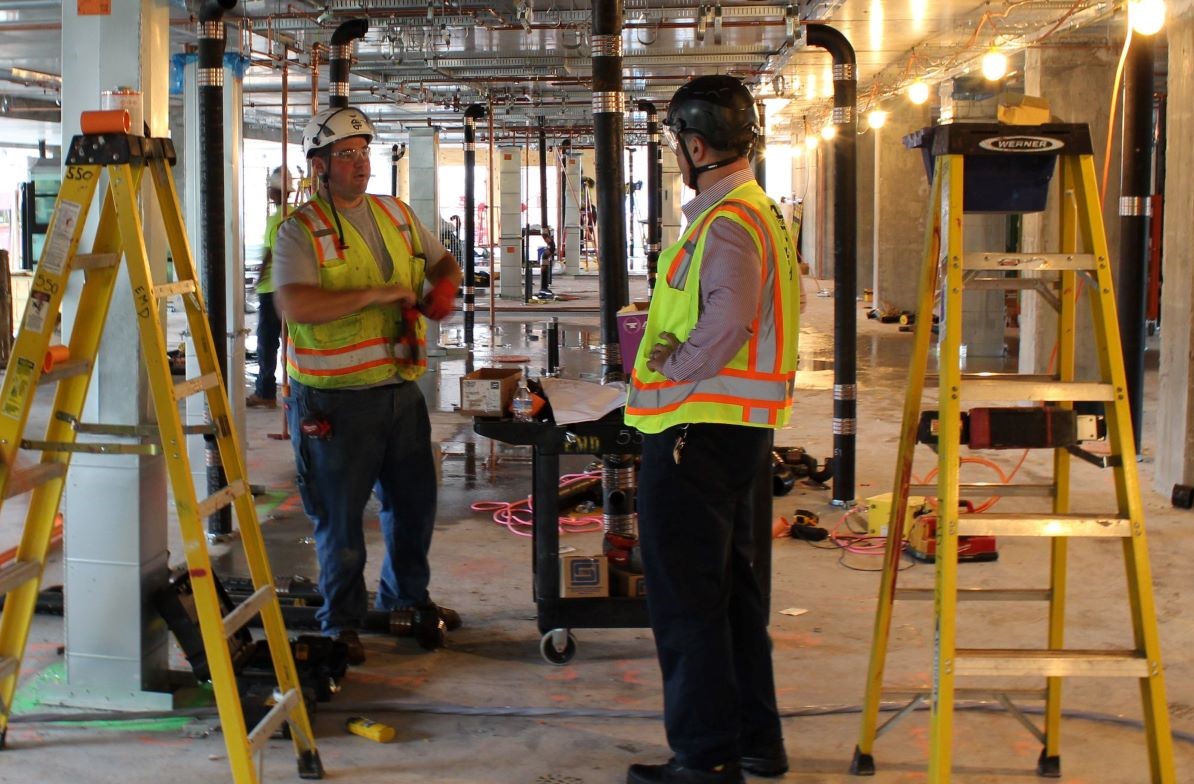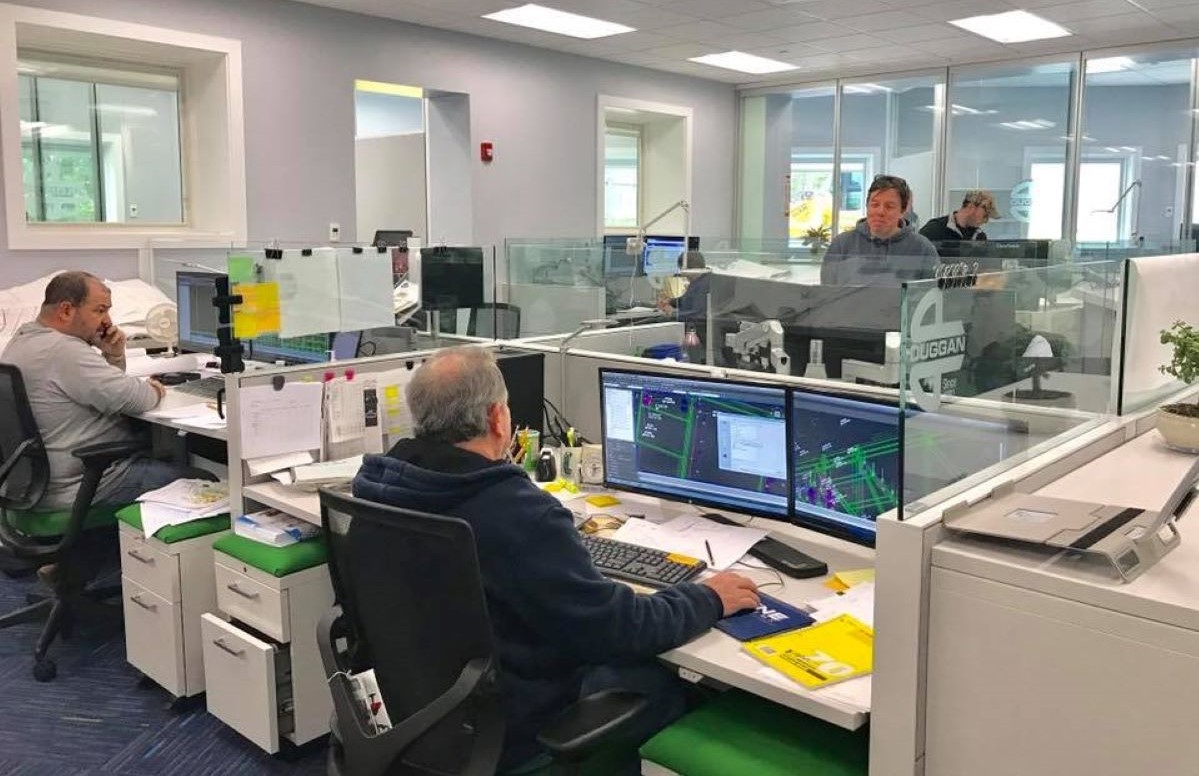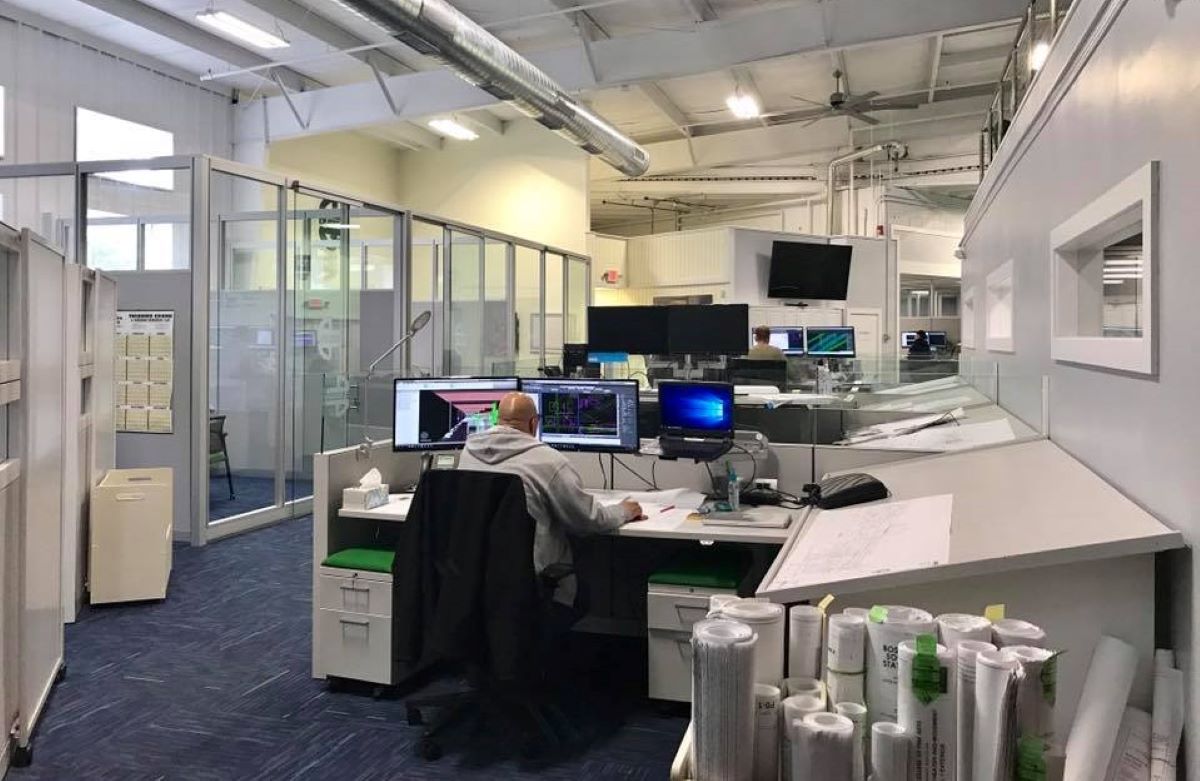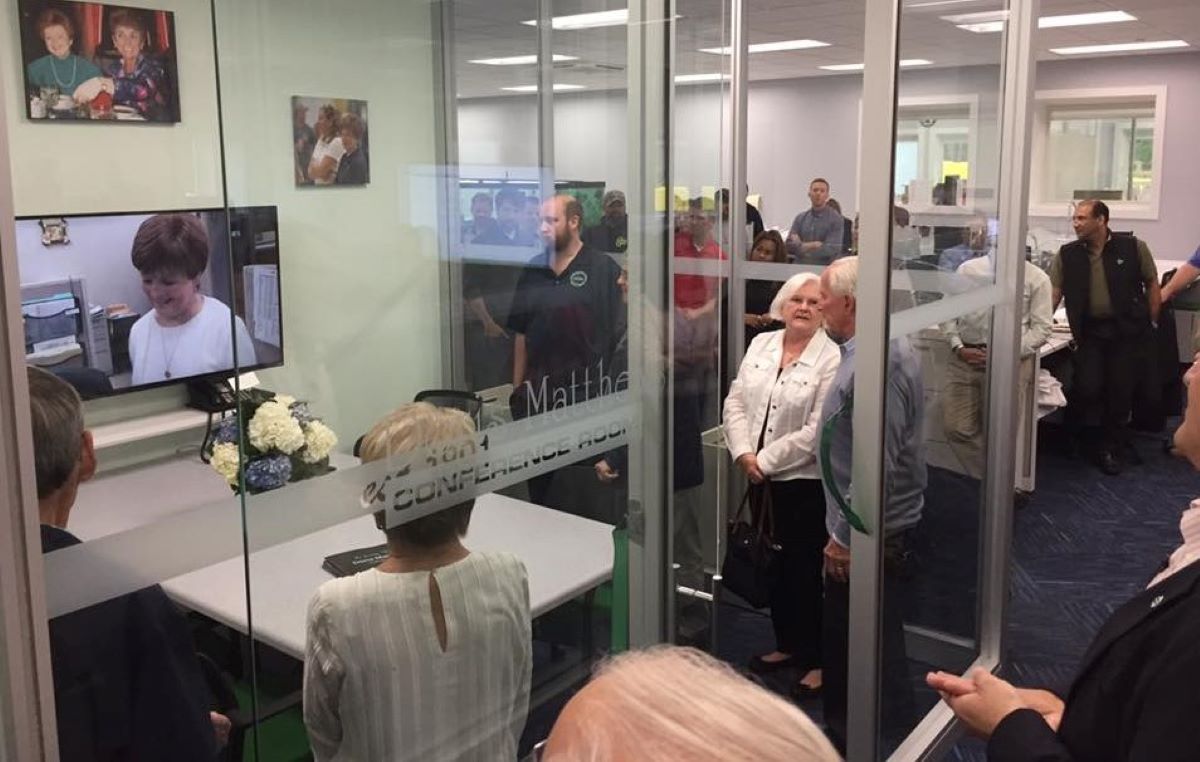E.M Duggan’s Rebellion to Weather Storms and Win Downturns
Starting out as a mom-and-pop plumbing shop, E.M. Duggan now leads the plumbing, HVAC, and fire protection scenes in the area of Massachusetts. The company today operated under the leadership of its fifth-generation – Len Monfredo, with an employee base of over 400 people and generated around $233M in 2019, according to the BizJournals.
Joining the company in 2009, Monfredo and his team had once sunk the company to raise it all over again. How did they navigate through difficulties and the lessons learned from those upheavals?
Persevering by Going against the Current
With a history of nearly 30 years active in the industry, Monfredo is the former owner of two New York City-based design and construction companies, which are still up and running today. And while chairing and leading a 130 years-old company this is how the President weathers down storms.
In an interview with the Radiant & Hydronics, Leonard Monfredo recalls E.M Duggan survived the Great Recession just by going against the current. It was 2009 when Monfredo sold his general contracting business and joined the firm – which at that time led by Vicent Petroni as well as making about $70M to $80M in revenues.
However, the problem lies shortly after his inception, as a year later the firm sunk that number into half of about $36M. But instead of cutting back to ease the situation, both Monfredo and Petroni perceive such difficulty as an opportunity to stand out from their rivals with a line of fresh and new hiring.
“Everyone was laying off,” says Petroni – the firm’s former President and CEO. “We had the opportunity to pick up some fabulous people who were never on the market and they couldn’t wait to get here.”
“While the recession was a bad thing, it gave us that freedom as an organization. Vinnie and I assembled a team of people who would have never been available to us if the construction industry was doing fantastic.” Monfredo explains how his team has nonstop reached out for opportunities and found this treasury of 15 people whose expertise, the President says, to be the company’s future.
“While we were going through the recession, we planned a growth period,” Monfredo explains. “We started by putting the right people on the bus. We knew once the recession ended there would be work to do. And when the floodgates opened, we were more than ready for it.”
It was the momentum to strive forward that helped the team navigates through downturns. From the lowest point at $36M, revenues jumped to $125M and continued to climb to $233M in 2019, as reported in a BizJournal article.
How to Break through the Limitation of Third-Party Technology?

While making grand decisions in critical time spells great impact for businesses, small daily steps are accounted to represent those decisions. How E.M Duggan slowly approaches the industry’s biggest problem – technology as well as its limitations – is one of the pieces of evidence to prove its dominant status.
In an article with the High Profile, Jeff Elwell – E.M Duggan’s technology manager breaks down how his team approaches the challenge of utilizing the increasing amounts of data and has created ways to rely less on third-party applications to get things done.
“We didn’t want to be changing so that we can use technology, but we wanted to be advancing because we’re using technology.”
Elwell explains his team wanted to take a more holistic approach to the way they executed each project so that the product would be exactly as the designers, envisioned them to be. Which goal has taken the team on a journey where they learn to rely more on themselves to overcome the limitation holds by popular third-party software like Revit or AutoCAD.
The first step is to make sure you have your own exclusive software and customization internally. “We’ve made tools to both make up for the shortcomings of the software and to utilize all of its strengths for our own applications,” the manager continues, this includes designing new tools to aid in the fabrication and modeling process, as well as creating add-ins for Revit that better allow for the delivery and utilization of information to the fab shop and out to the field.

He believes the resulting increase in efficiency, along with the investment in laser scanners to scan job sites before they begin a project, has made the whole process safer by allowing more to get done and on time in fabrication, and less out in the field. He emphasizes that it’s important to never use technology “for technology’s sake” but to have the right reasons, and to make sure a need is being addressed with the introduction or creation of any new technology.
The second move is on the human side. To improve communication all the way around is what it all comes down to, Elwell addresses, the user experience could only be as good as the amount and quality of information they get feedback on. “There are no better people to have an opinion on how to change or develop something than the people who are using it every day,” so everyone is given a chance to have their voice heard during the process. At the same time, for something as dynamic as these in-house adoptions to work, there absolutely has to be buy-in from the top down.
The technology manager believes relying more on his people as well as the original tools and software they have created at E.M Duggan would position the firm in the right place. It is where the clients get better efficiency and they are happy with the final product while costs stay down.
The result was, as Elwell explains, “a happy medium with having our own customization and our own proprietary software internally, along with using solutions that are already on the market that other people are building.”
The Workforce-Side of the Tech Race Story
More from the 130 years-old firm and its seasoned leadership, in an interview with the BizJournals, Len Monfredo discussed with Stephen Affanato, Executive Vice President of the New England Mechanical Contractors Association upon the challenges he sees while embracing new technology, how had they overcome it, talent acquisition and detail description of a quality general contractor as well as tips for business owners and developers.
First of all, is the biggest trend they are seeing in construction today and might as well be in the upcoming years. “I think the biggest trend is on the prefab. We’re focusing on building as much of the job in-house in a safe environment with high tech equipment so that it’s done properly and there’s good quality control on it.”

Monfredo addresses one of the things his team investing in the most is the coordination group – who draws 3D models that they build from. To be more specific, before building anything in the field, the team plans out its goal product and carves up little parts and pieces of those systems, then those parts and pieces are taken to the prefab shop to be done behind the scene. It’s a cycle where teams’ skills are enhanced by doing repetitive tasks and subsequently make the prefab shop become more efficient. The company wants from thirty to fifty percent to now of about ninety percent prefabbing.
More importantly, is the workforce side of the story. It was hard for folks to embrace changes yet technology is now a new standard, so the team soon gets on back on their feet. “At first, it wasn’t easy. But today we have iPads, laptops, iPhones, every one of our foremen communicates digitally.”
While it has saved a lot of time and exponentially increase the team’s speed, also tags along with higher expectations. The general contractors and developers today want buildings to be built much faster – what used to take three years to be done, now is expected to be delivered in a year and a half, he says.
Do More with Fewer People
“One of the things we’re trying to do with the technologies and the software and the prefabs is limit the amount of actual labor that we need to build the systems that we install, and that will maintain control over the workforce. So, we’re trying to do a lot more with a lot fewer people.”
However, in the meantime, the firm is doing more training in-house instead of sending people off to centers that are catered to the industry – Monfredo says, as an initiative to promote within the ranks. Through the apprenticeship program, it is easier to identify if a person has the ability or the potential to be a foreman, and the leadership would base on such insights to pay more attention as well as create more opportunities for them.
“We identify people early on in the process and give them good mentoring and coaching to help them grow.”
Maintaining Good Relationships Is Key in a Competitive Market
Continuing the conversation, both presidents give insights into the market and ways of perceiving relationships across the industry.
“It’s an extremely competitive field. You’re talking really small percentages margin-wise in some cases.” Monfredo explains around 2018 people are busy and more developers are working, but if the industry dips down, the price would subsequently sink along – it’s all about supply and demand. “Some are willing to go a little lower than others and then try to make it up on change orders,” he says, but over time companies will pay off of that with their reputation and expertise.
It’s not always cheaper that wins the job. “It’s not always cheaper. It’s relationships. It’s also who has what. So, they look at how much work all of us have. Everyone gets their fair share of work. It’s also based upon workload and what each one of us is capable of handling.”

On top of that, knowing your role in the game is also one of the ways to shape up a good relationship. “I would say what makes a really good general contractor is the group of people that are working on that particular job.” Every general contractor is a combination of teams, therefore, it’s your job as a specialty to look at that vacancy and tell which group from that contractor is working on that job and decide whether you want to aggressively go after that.
Besides, maintaining those relationships is also critical, there are a few things the firm has compromised to achieve such connections. For example, when the paperwork gets in the way of projects.
The construction industry without a doubt requires a lot of signing and while being buried in paperwork, it is absolutely hard to do business.
“Because of our relationships with certain developers and general contractor’s, we’ll occasionally circumvent around that kind of paperwork and just do the job and let the dust settle after the fact because we want to get the job done for them,” Monfredo says. The risk is there but that is what you do to maintain a good relationship with the general contractor and developers. Especially in high-end construction customers like Boston, it is not easy.
Last but not least, the president claims, the best questions both business owners and developers should be asking would be: How is the labor force doing? Is it taxed out so that you are not worried about overtime? You have to do your ‘homework’ on the contractor that you want to work with, and also inspect the subs they work with.
“The construction community in Boston is extremely sophisticated. I think that if you’re a developer you know that. You want to build here because you know what you’re getting.”
The Bottom Lines
The common theme we are seeing at E.M Duggan’s and most companies’ stories of surviving and thriving out of the economic downturn is how good they are at planning for a growth period while going through the recession. It usually is that momentous decision that takes a toll on the company’s future and the posed question would be to stay put or outgrow.
On top of that is the underlined message of how important relationships are in such an environment as well as your choice of the role you want to play in a grand project.









